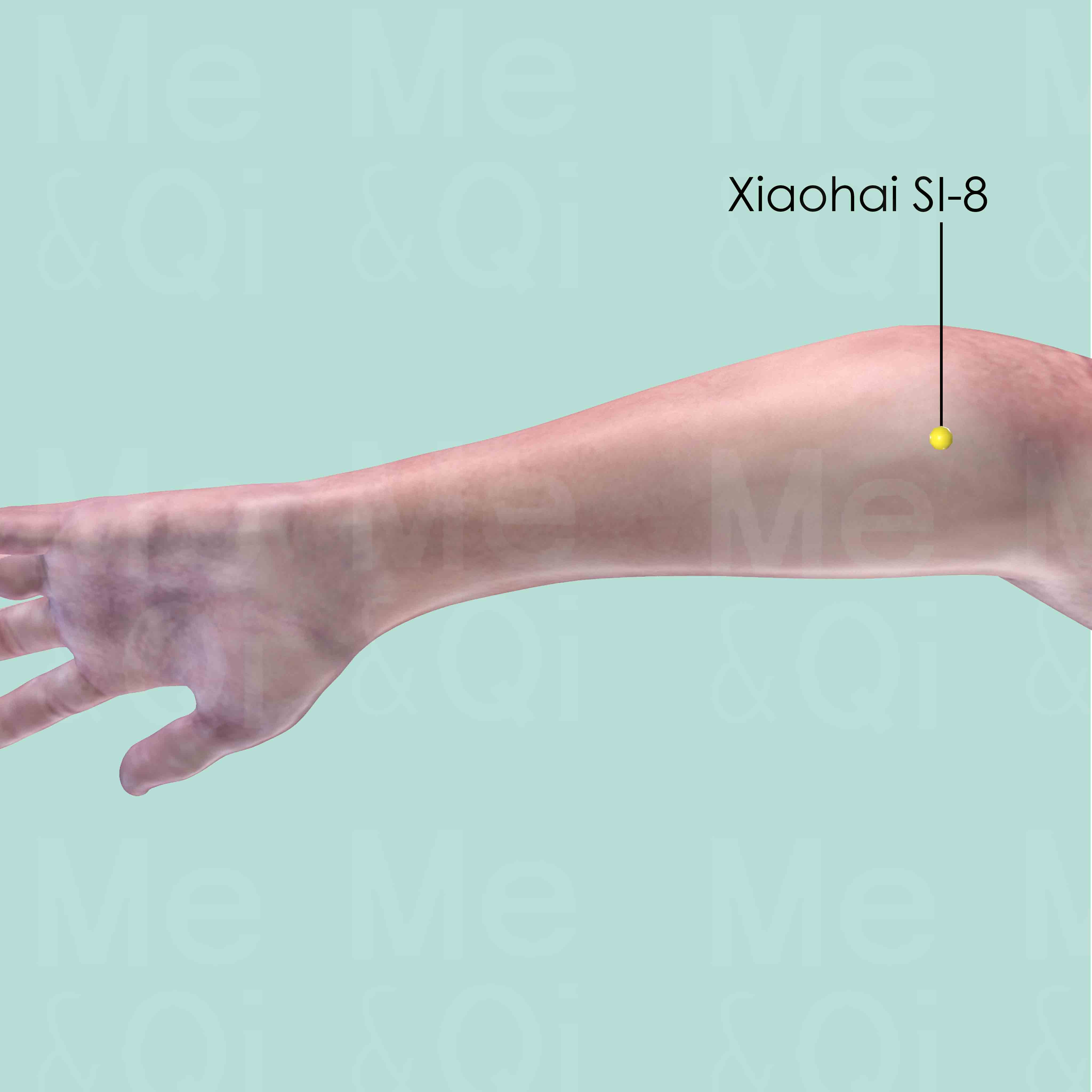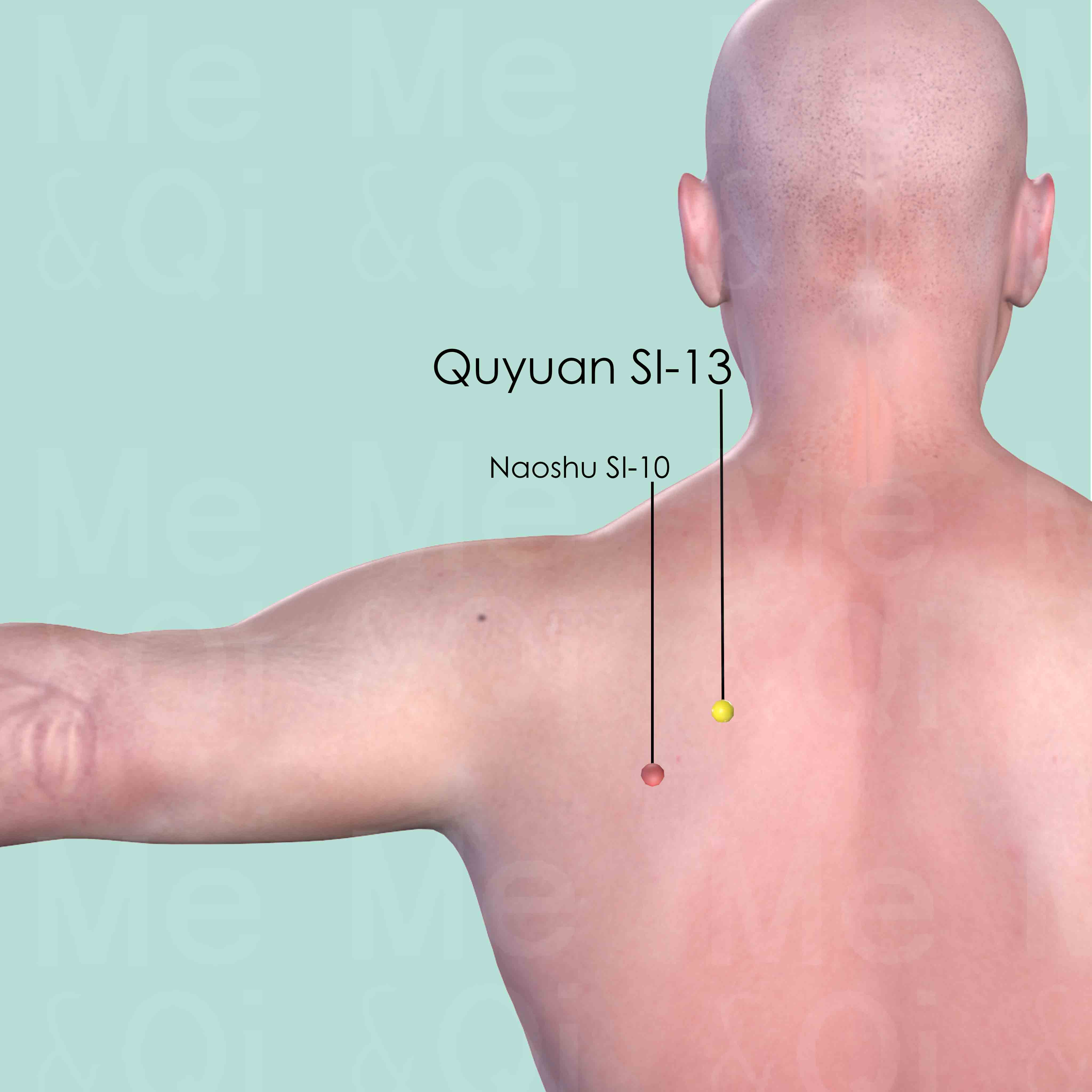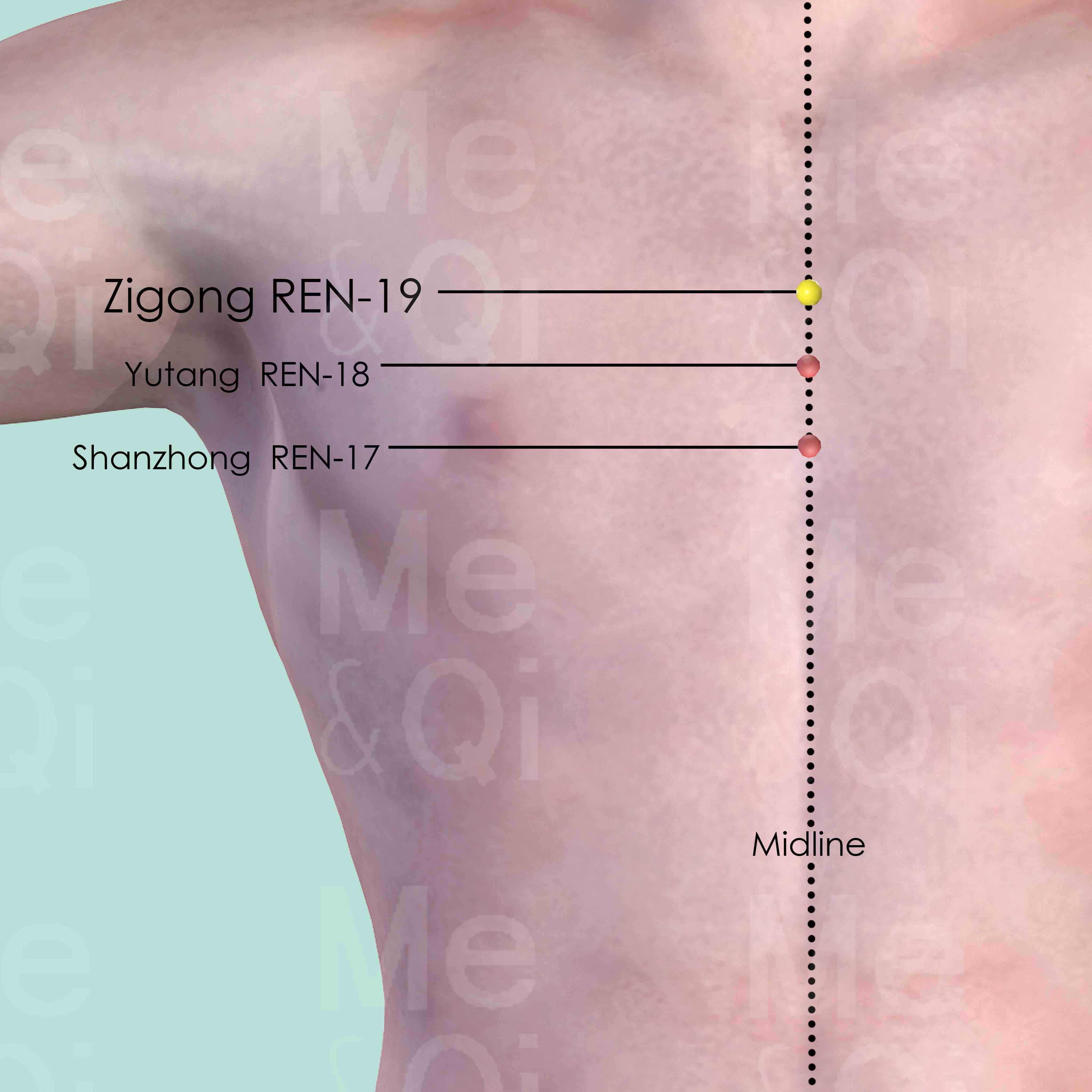Bone Painaccording to TCM
Symptom family: Bone Pain and Discomfort
Parent symptom: Bone And Joint Pain
Sub-symptom(s): Hip Bone Pain Clavicle Pain Scapula Pain
What is Bone Pain?
Bone pain is a deep, penetrating discomfort or ache within one or more bones, ranging from acute injuries like fractures to chronic conditions such as osteoporosis. It can be localized in specific areas, such as the hips, clavicle, or scapula, or more generalized throughout the skeletal system. This type of pain often signifies an underlying medical condition, necessitating an accurate diagnosis and appropriate treatment. Bone pain is not only a physical ailment but can also significantly affect an individual's overall well-being and quality of life.
How does TCM view Bone Pain?
Traditional Chinese Medicine (TCM) interprets bone pain through the lens of imbalance within the body's fundamental elements and energy systems. Unlike the more symptom-focused approach of Western medicine, TCM delves into the underlying patterns of disharmony—such as Qi Stagnation, Blood Deficiency, or Yin and Yang imbalance—that lead to bone pain.
It emphasizes the importance of identifying these patterns to tailor a treatment that addresses the root cause of the pain, incorporating a holistic strategy that seeks to restore the body's natural balance and harmony.
Root Causes of Bone Pain in TCM
In the realm of TCM, bone pain is commonly associated with patterns such as Kidney Yin Deficiency, which can manifest as deep-seated bone aches, alongside symptoms like dry mouth at night, lower back pain, and constipation, indicating a fundamental imbalance in the body's nourishing and cooling aspects.
Addressing the underlying cause is crucial for alleviating bone pain and fostering a deeper sense of wellness and vitality.
Explore below more details about what might cause Bone pain according to TCM.
- By Syndrome
- By Organ
- Yin Deficiency
- Kidney
Yin Deficiency
Yin deficiency in TCM is a pattern of disharmony characterized by a depletion of the body's Yin energy, which represents the cooling, moistening, and nurturing aspects of our physiology. This condition often arises from factors like chronic stress, overwork, insufficient rest, or prolonged illness. Symptoms of Yin deficiency can include a sensation of heat, especially in the afternoon or evening, night sweats, insomnia, a dry mouth or throat, and a red tongue with little coating. There might also be a general feeling of restlessness or irritability. Since Yin is essential for balancing the body's active and warm Yang energy, its deficiency leads to a relative excess of Yang, manifesting as heat or dryness symptoms.... see more
Yin Deficiency Patterns That Can Lead to Bone Pain
| Pattern Name | Relevant Symptoms | Relevant Formulas |
|---|---|---|
| Kidney Yin Deficiency | Bone ache, Perspiration, Back pain, Hearing loss, Dry mouth and throat at night, Lower back pain, Constipation, Scanty and dark urine, Infertility, Premature ejaculation, Generalized fatigue, General weakness, Depression, Anxiety, Heat sensation in palms, Evening heat sensation, Flushed cheekbones, Menopausal hot flashes, Preference for sipping, Evening anxiety... see more | Liu Wei Di Huang Wan | Zuo Gui Wan | Zhi Bo Di Huang Wan | Bai Zi Yang Xin Tang | Qi Bao Mei Ran Dan |
Kidney
In TCM the Kidneys are regarded as the body's most fundamental reservoir of Essence, known as Jing, which influences growth, reproduction, and aging. They are not just organs for filtering blood, but a holistic system governing vital life forces. When the Kidneys malfunction in TCM, it can manifest as a variety of health issues, such as chronic fatigue, reproductive problems, imbalances in fluid metabolism leading to edema or dryness, lower back pain, and a sense of fear or insecurity.... see more
Kidney Patterns That Can Lead to Bone Pain
| Pattern Name | Relevant Symptoms | Relevant Formulas |
|---|---|---|
| Kidney Yin Deficiency | Bone ache, Perspiration, Back pain, Hearing loss, Dry mouth and throat at night, Lower back pain, Constipation, Scanty and dark urine, Infertility, Premature ejaculation, Generalized fatigue, General weakness, Depression, Anxiety, Heat sensation in palms, Evening heat sensation, Flushed cheekbones, Menopausal hot flashes, Preference for sipping, Evening anxiety... see more | Liu Wei Di Huang Wan | Zuo Gui Wan | Zhi Bo Di Huang Wan | Bai Zi Yang Xin Tang | Qi Bao Mei Ran Dan |
TCM Herbal Formulas for Bone Pain
To combat bone pain, TCM prescribes specific formulas and herbs designed to nourish Yin and Blood, directly targeting the underlying imbalances. Among these, Liu Wei Di Huang Wan, featuring Prepared Rehmannia (Shu Di Huang) as a key ingredient, is particularly effective for Kidney Yin Deficiency. This formula exemplifies TCM's approach to healing, using herbs to replenish the body's essence and mitigate symptoms like bone pain. By addressing the root cause of the imbalance, TCM offers a nuanced and individualized path to relief and recovery.
Explore below some TCM herbal formulas used to address bone pain, organized by cause and by formula type.
- By Cause
- By Formula Type
- Yin Deficiency
- Formulas that nourish yin and tonify
- Formulas that nourish the heart and calm the mind
- Formulas that tonify yin and yang
Top Formula for Yin Deficiency:
Liu Wei Di Huang Wan
Suitable for Yin Deficiency patterns that may cause bone pain, such as Kidney Yin Deficiency
Learn moreAll Formulas Recommended for Bone Pain Caused by Yin Deficiency
| Formula | Patterns Suitable For |
|---|---|
| Liu Wei Di Huang Wan | Kidney Yin Deficiency |
| Zuo Gui Wan | Kidney Yin Deficiency |
| Zhi Bo Di Huang Wan | Kidney Yin Deficiency |
| Bai Zi Yang Xin Tang | Kidney Yin Deficiency |
| Qi Bao Mei Ran Dan | Kidney Yin Deficiency |
Formulas that nourish Yin and tonify
These formulas are suitable for some bone pain-causing patterns like Kidney Yin Deficiency.
One such formula is Liu Wei Di Huang Wan, with prepared rehmannia as a key herb.
Other formulas of this category are listed in the table below.
All "formulas that nourish yin and tonify" recommended for bone pain
| Formula | Patterns Suitable For (if applicable) |
|---|---|
| Liu Wei Di Huang Wan | Kidney Yin Deficiency |
| Zuo Gui Wan | Kidney Yin Deficiency |
| Zhi Bo Di Huang Wan | Kidney Yin Deficiency |
Formulas that nourish the Heart and calm the Mind
These formulas are suitable for some bone pain-causing patterns like Kidney Yin Deficiency.
One such formula is Bai Zi Yang Xin Tang, with biota seeds as a key herb.
Formulas that tonify Yin and Yang
These formulas are suitable for some bone pain-causing patterns like Kidney Yin Deficiency.
One such formula is Qi Bao Mei Ran Dan, with fleeceflower root as a key herb.
Acupoints for Bone Pain
TCM also advocates the use of acupuncture, pinpointing specific acupoints that correspond to the patient's diagnosed pattern of disharmony. For bone pain, the acupoint Zigong (REN-19) is especially beneficial. Located on the chest's midline, this point is known for its ability to open the chest, regulate Qi, and descend rebellious Qi, offering relief from discomfort and promoting the smooth flow of the body's vital energy. This targeted use of acupuncture complements herbal treatments, forming a comprehensive strategy to alleviate bone pain and enhance overall health.
Explore below some acupoints used to address bone pain, organized by meridian.
- By Meridian
- Small Intestine Channel
- Bladder Channel
- Gall Bladder Channel
- Directing Vessel
- Triple Burner Channel
- Pericardium Channel
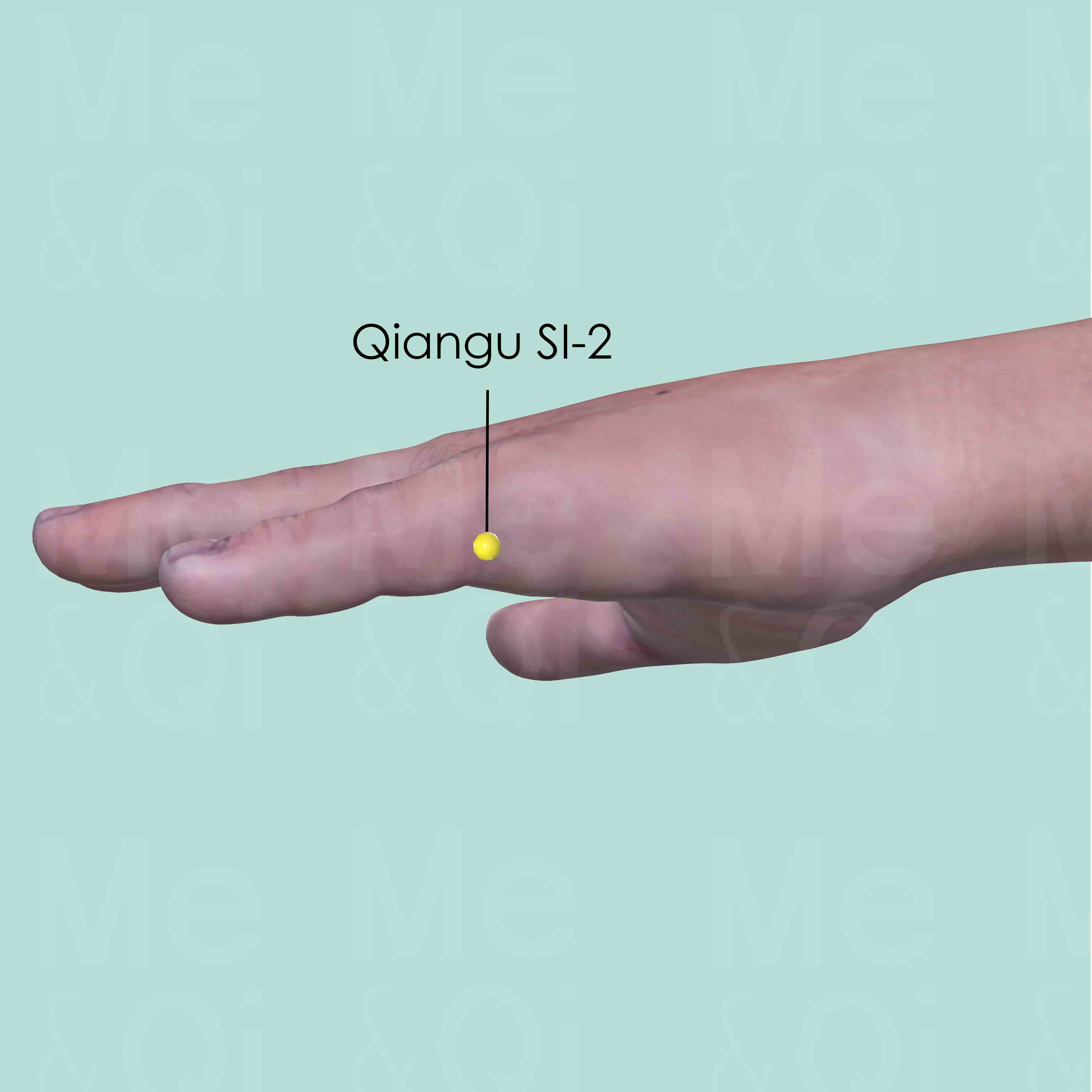
Qiangu SI-2
On the ulnar aspect of the little finger, distal to the metacarpophalangeal joint, at the junction of the shaft and the base of the proximal phalanx.
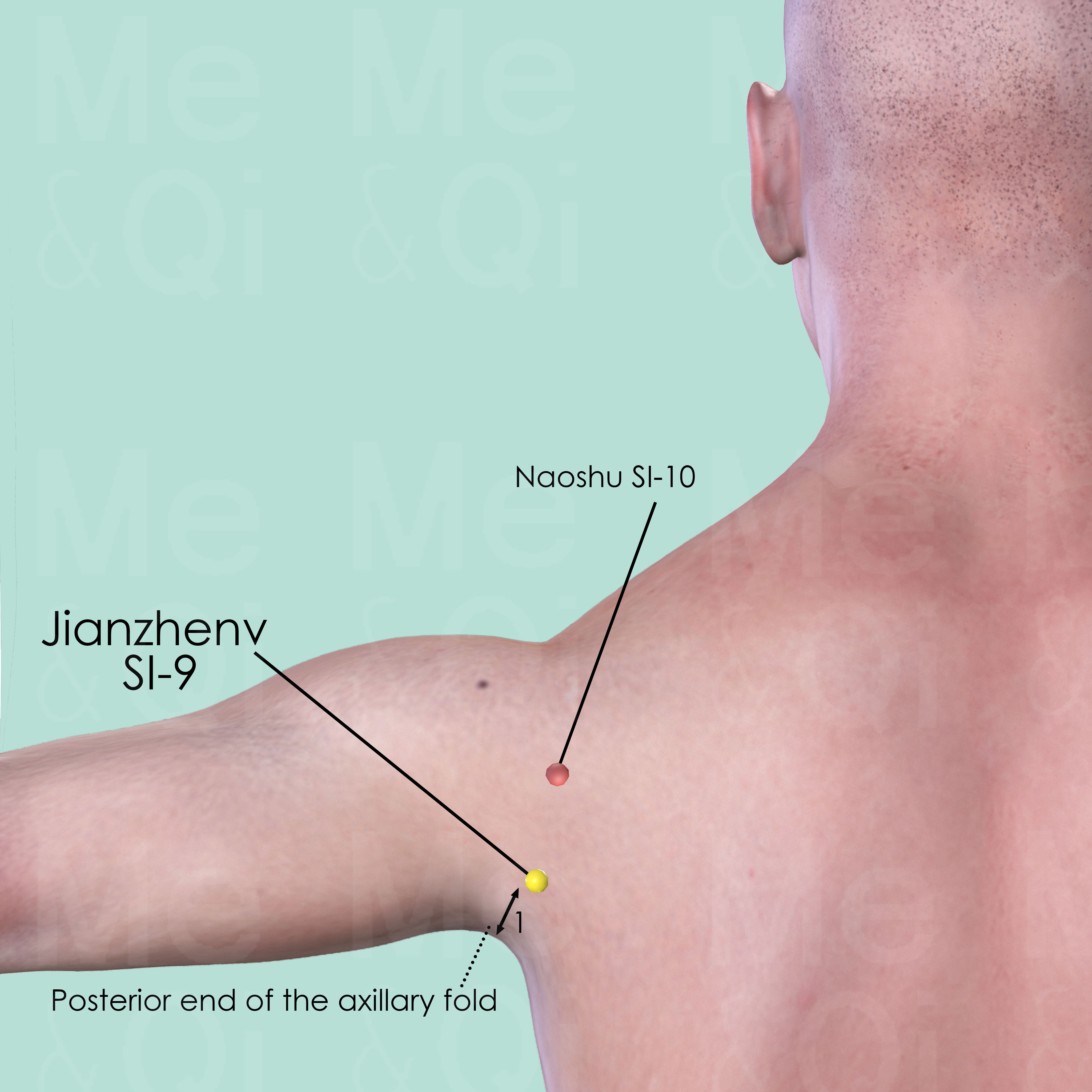
Jianzhen SI-9
Posterior and inferior to the shoulder joint. When the arm is adducted, Jianzhen SI-9 is 1 cun above the posterior end of the axillary fold. Naoshu SI-10 is located directly above Jianzhen SI-9.
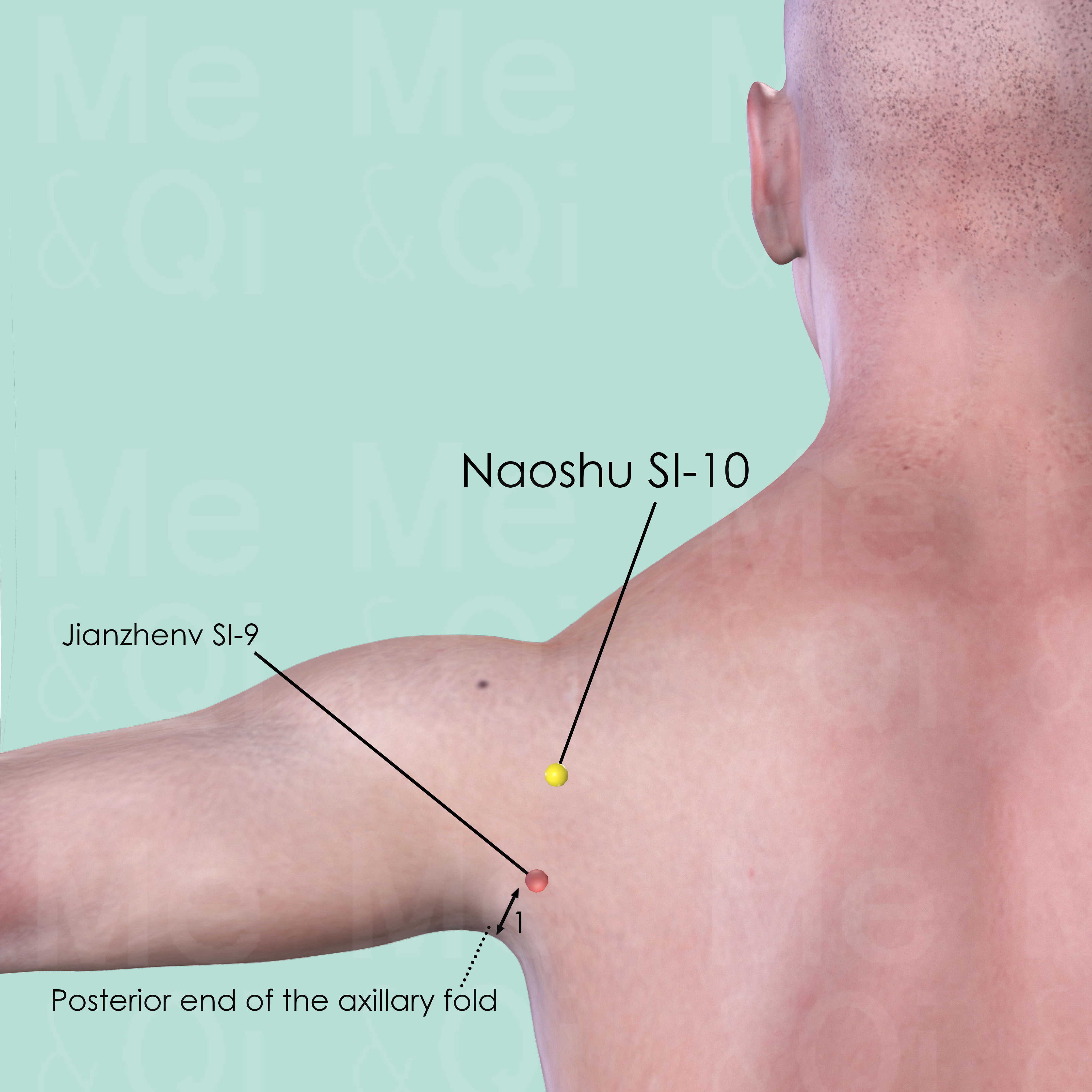
Naoshu SI-10
When the arm is adducted, Naoshu SI-10 is directly above JianZhen SI-9, in the depression inferior and lateral to the scapular spine.
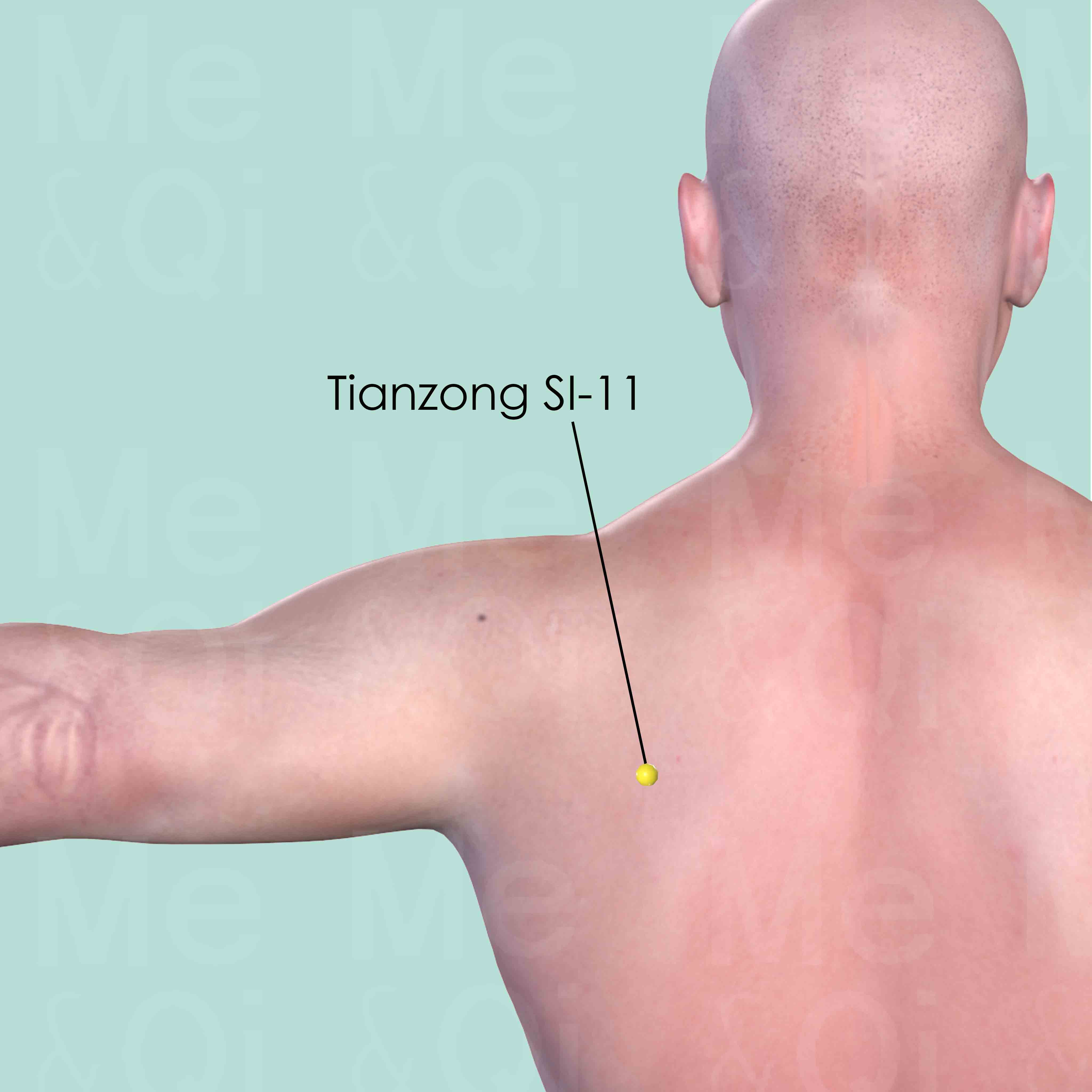
Tianzong SI-11
In the intrascapular fossa, at the junction of the upper and middle third of the distance between the lower border of the scapular spine and the inferior angle of the scapula.
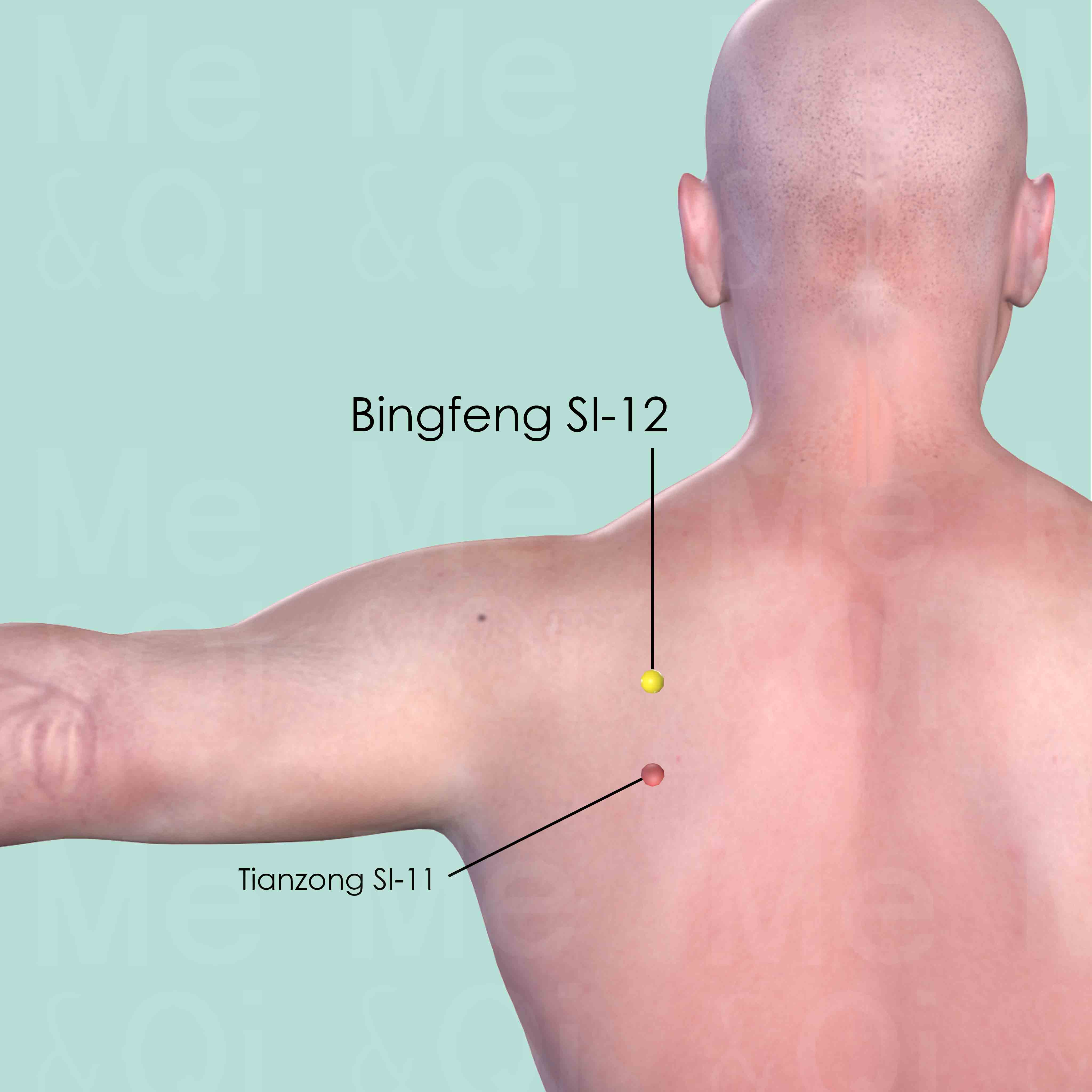
Bingfeng SI-12
In the center of the suprascapular fossa, directly above Tianzong SI-11. When the arm is lifted, the point is at the site of the depression.
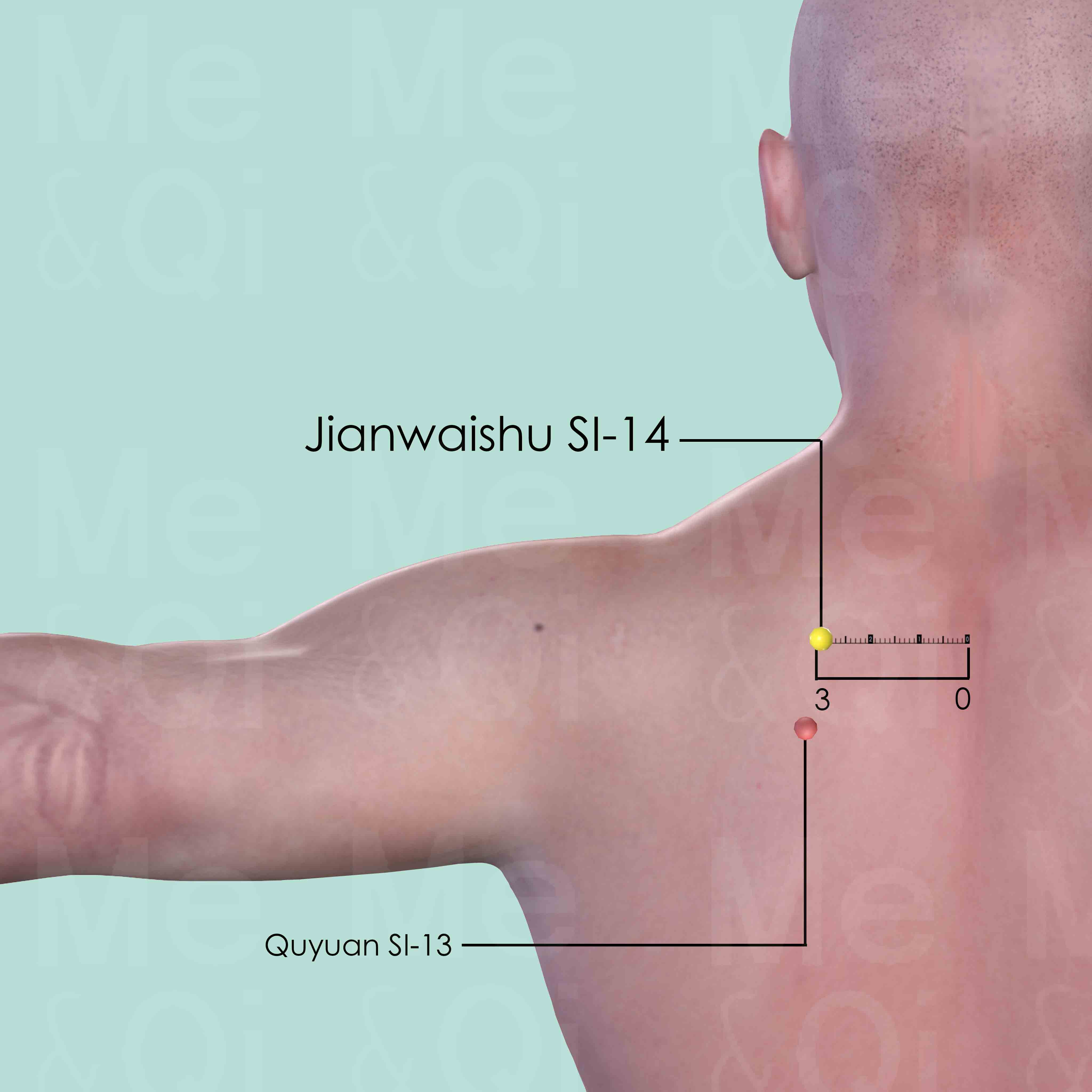
Jianwaishu SI-14
3 cun lateral to the lower border of the spinous process of the 1st thoracic verrtebra (T1), on the vertical line drawn from the levator scapulae muscle.
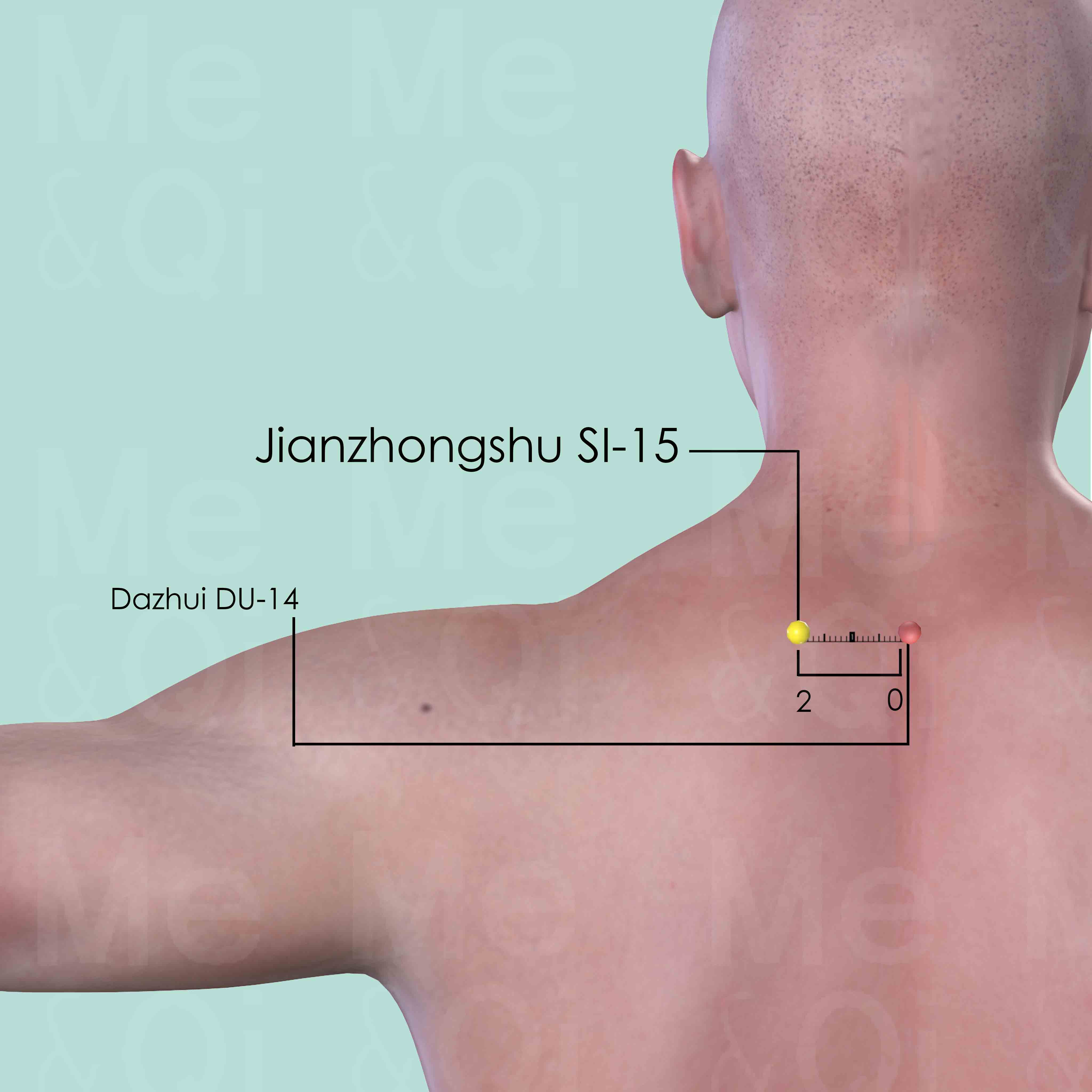
Jianzhongshu SI-15
2 cun lateral to the lower border of the spinous process of the 7th cervical vertebra (C7).
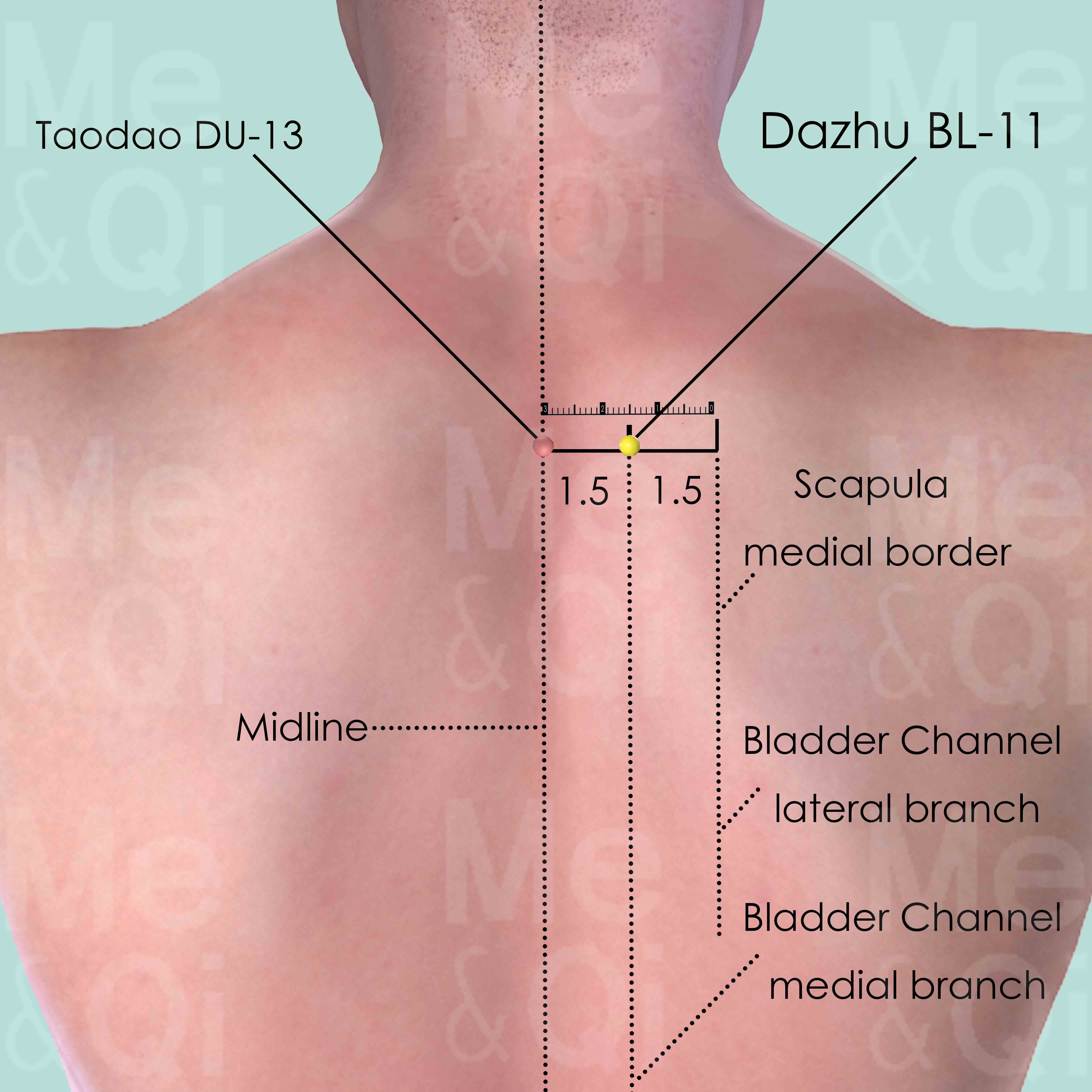
Dazhu BL-11
On the level of the lower border of the spinous process of the 1st thoracic vertebra (T1), 1.5 cun (about 2 finger-breadths) lateral to the posterior midline.
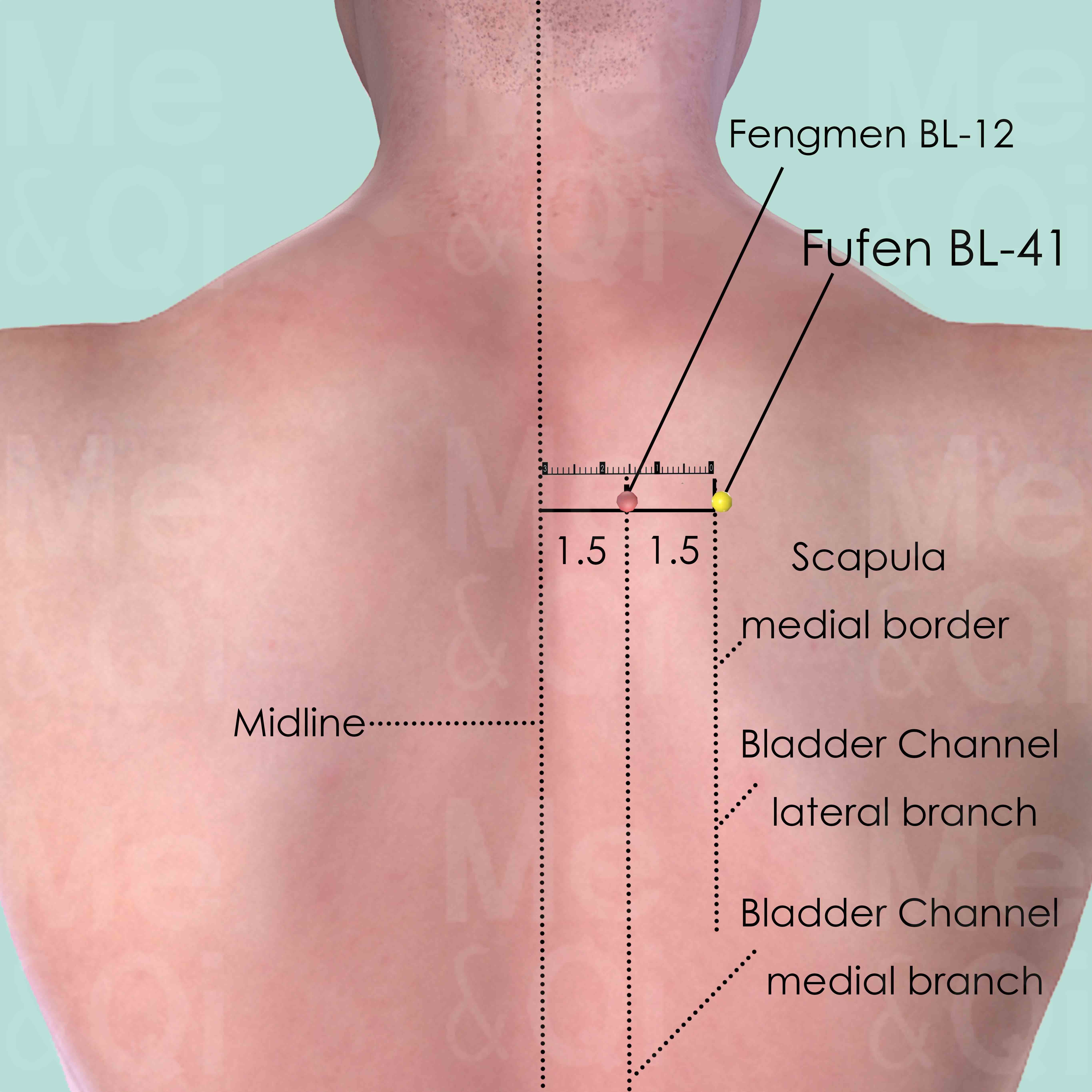
Fufen BL-41
3 cun (about 4 finger-breadths) lateral to the lower border of the spinous process of the 2nd thoracic vertebra (T2).
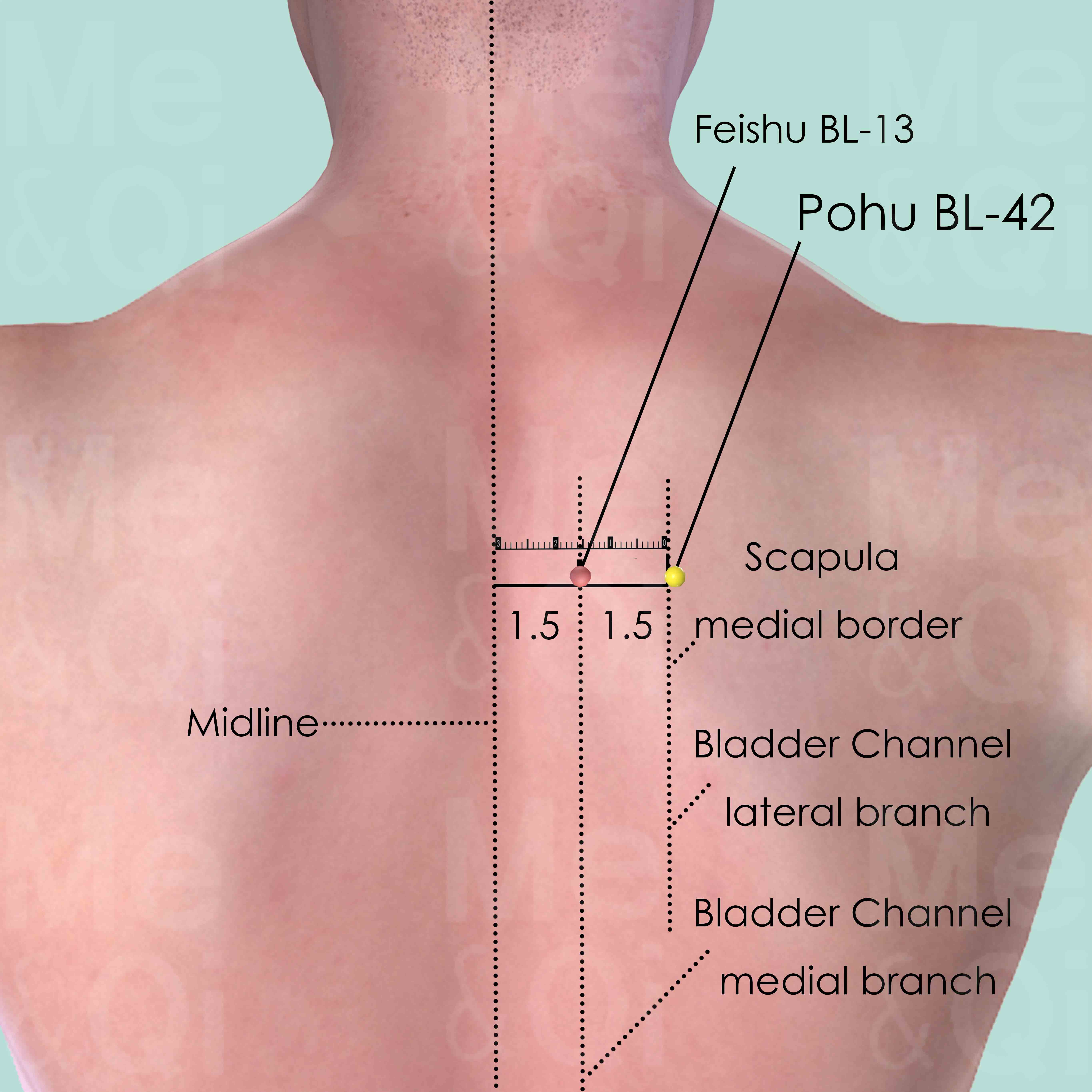
Pohu BL-42
3 cun (about 4 finger-breadths) lateral to the lower border of the spinous process of the 3rd thoracic vertebra (T3).
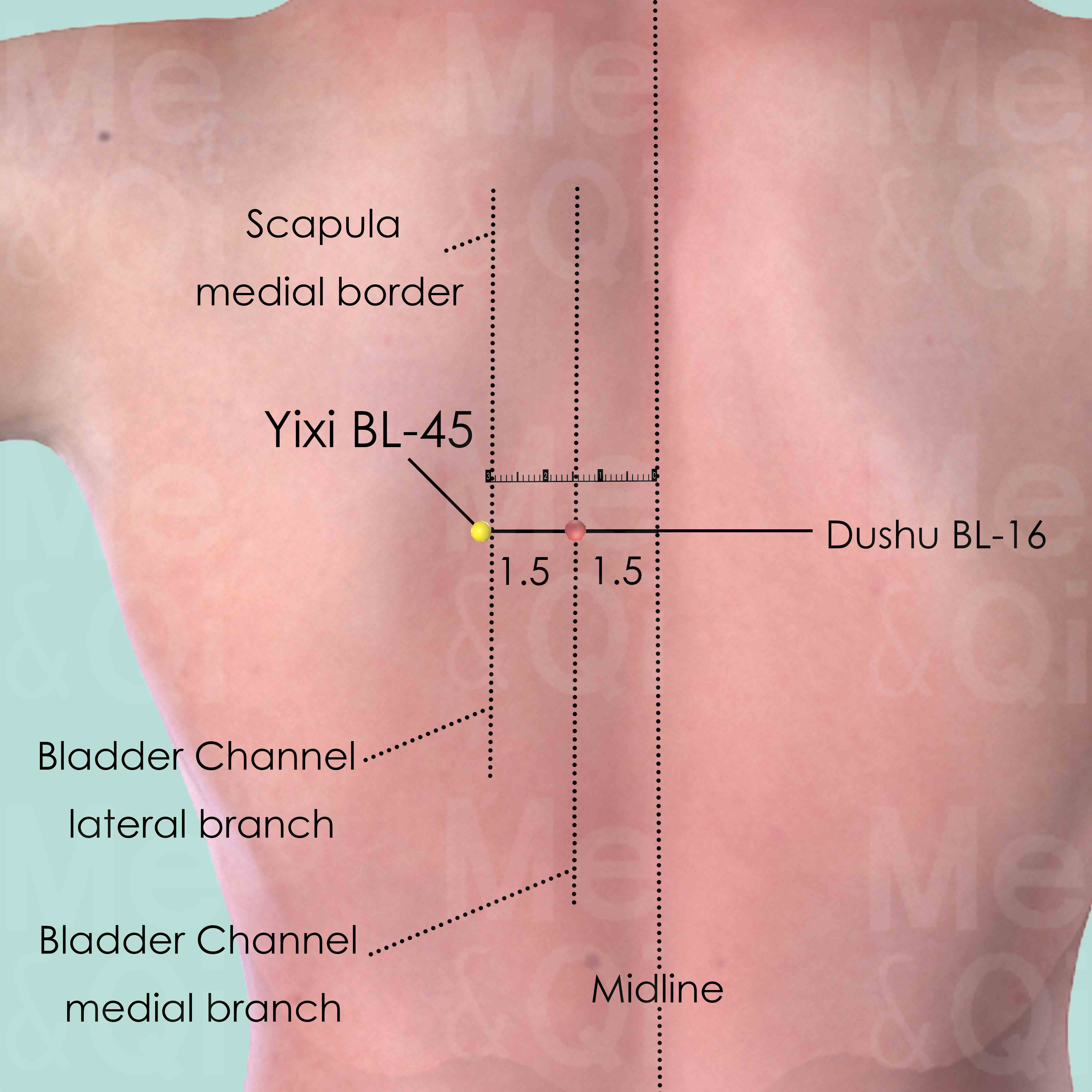
Yixi BL-45
3 cun (about 4 finger-breadths) lateral to the lower border of the spinous process of the 6th thoracic vertebra (T6).
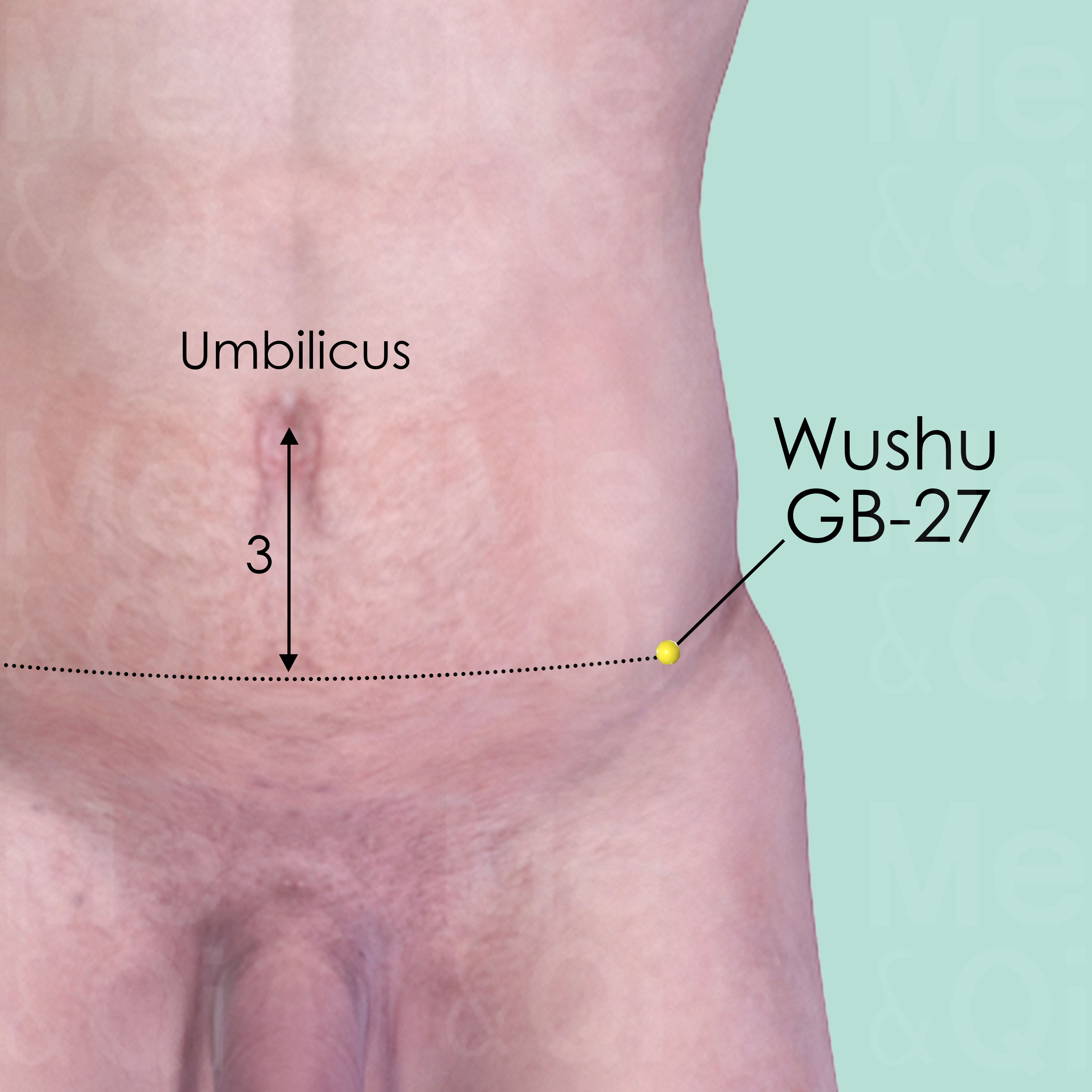
Wushu GB-27
In the lateral side of the abdomen, in the front of the anterior superior iliac spine (ASIS), 3 cun below the level of the umbilicus.
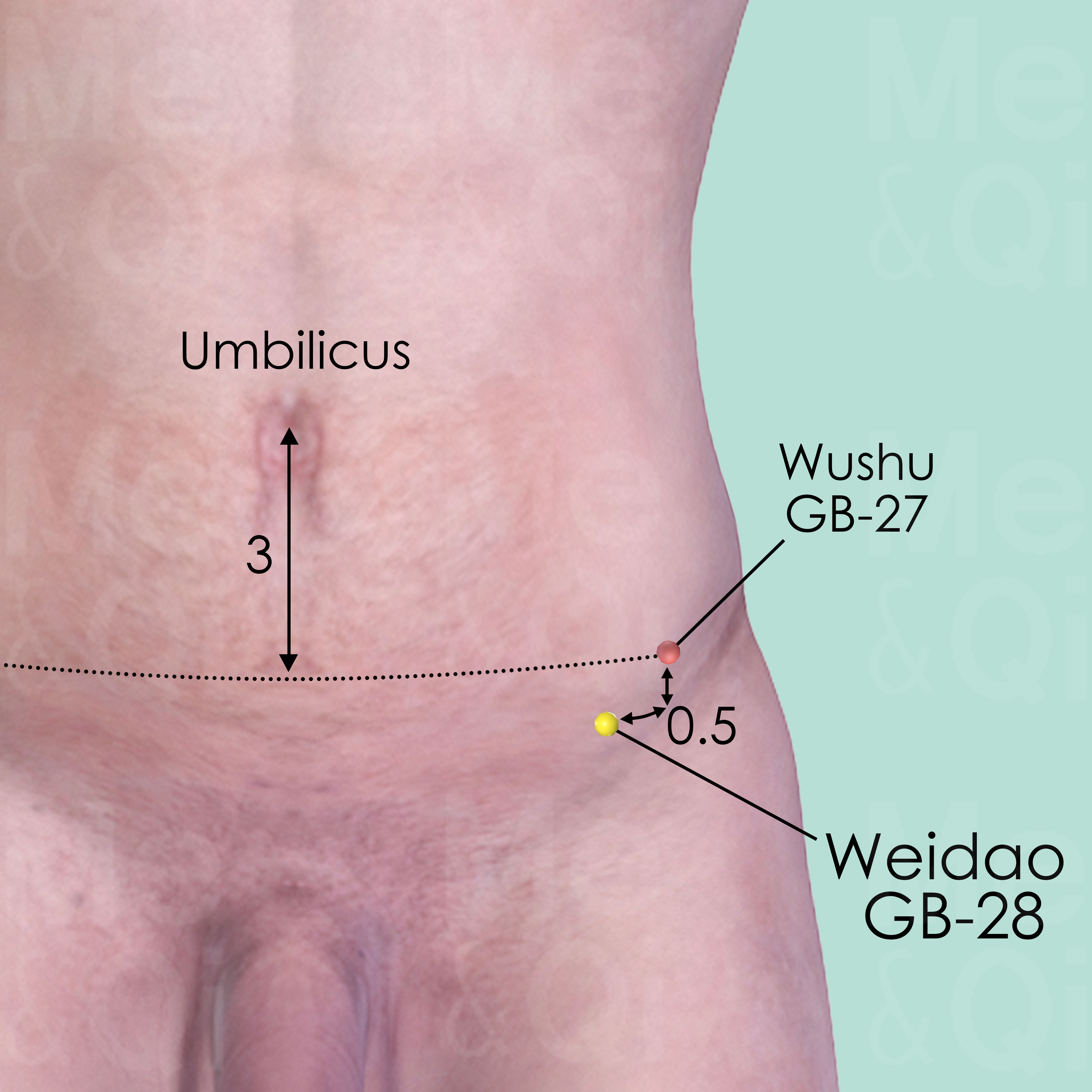
Weidao GB-28
Anterior and Inferior to the anterior superior iliac spine (ASIS), 0.5 cun anterior and inferior to Wushu GB-27.
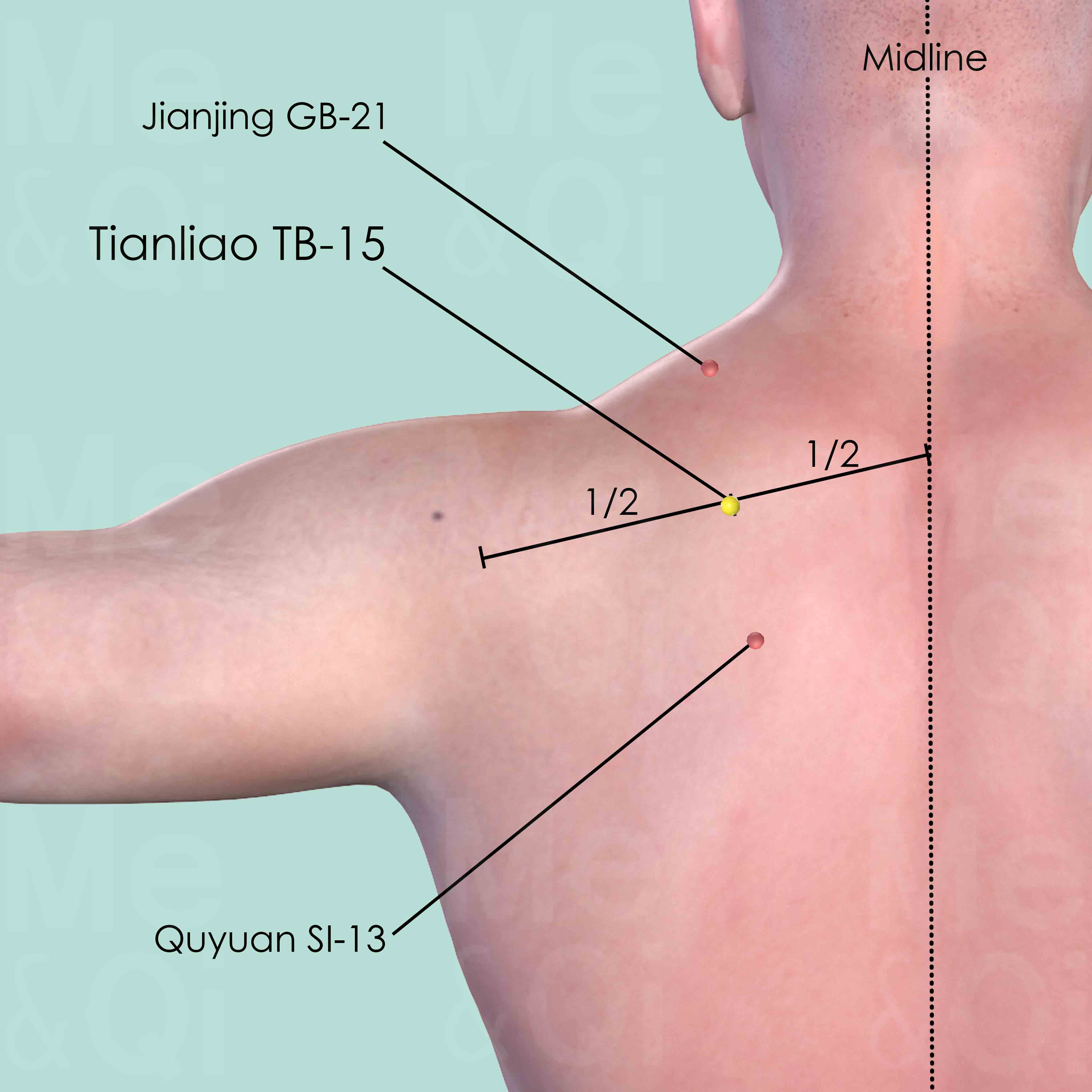
Tianliao TB-15
Midway between Jianjing GB-21 and Quyuan SI-13, on top of the superior angle of the scapula.
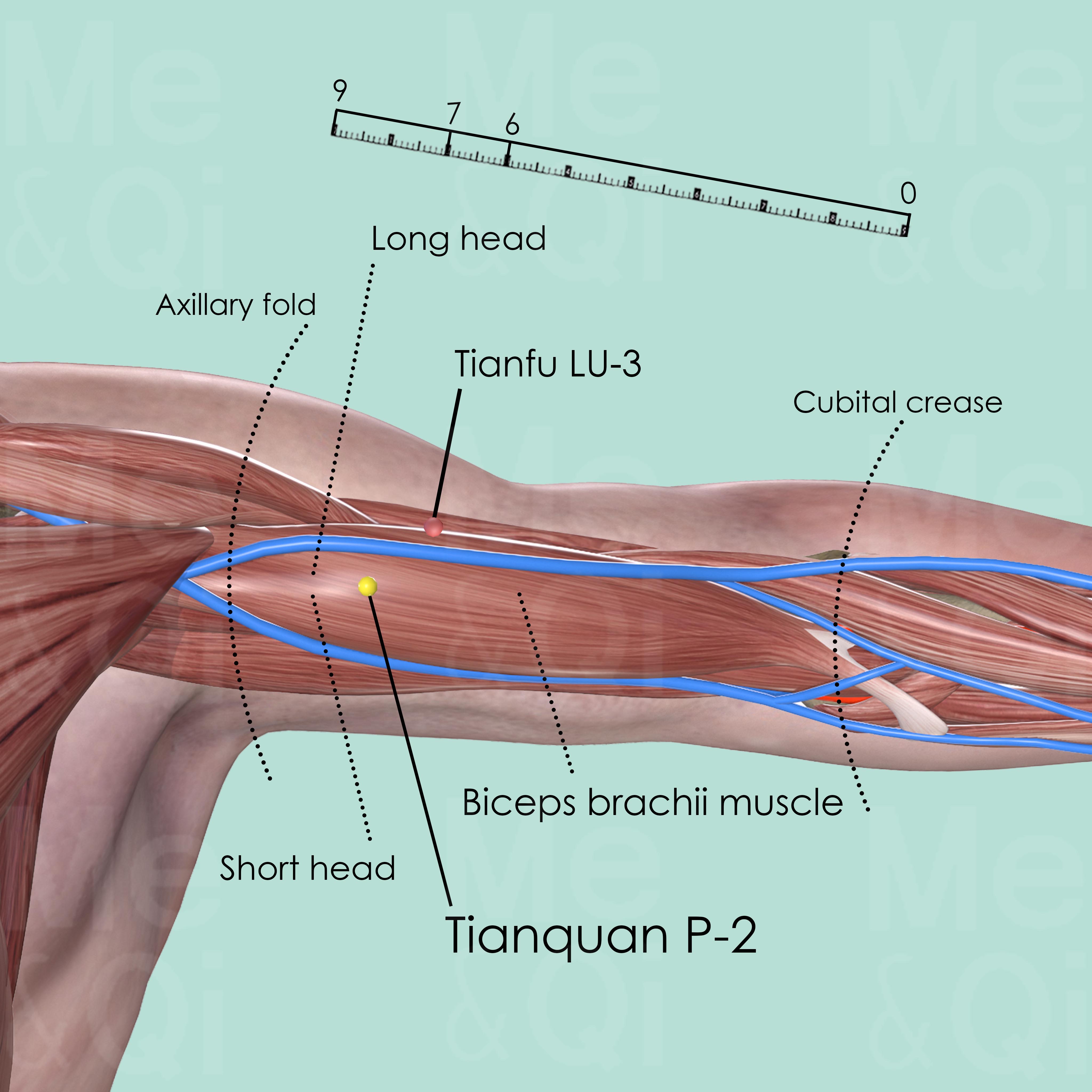
Tianquan P-2
2 cun below the end of the anterior axillary fold, between the two heads of biceps brachii muscle.

